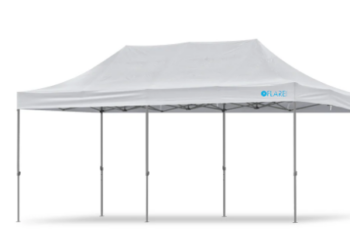Architecture is both an art and science; its applications range from building homes and schools, parks and stadiums, as well as opera houses and shopping malls designed with specific aesthetics in mind.
These designs can shape how people interact with one another and even impact both mental and physical wellbeing.
Safety
Architects play an essential role in ensuring the safety of those involved with construction. This task necessitates extensive research on building codes, innovations and city laws as well as keeping up with technological innovations. Architects must become well versed with this subject matter before undertaking their duties.
Architecture stands apart from most professions by being both an art and science. Although rooted in physics and geometry, it also requires aesthetic judgment as well as the capacity to understand our environment.
Every civilization has developed their own architectural style to represent their culture, ideas and values. Additionally, great architecture buildings or ensembles in parks or squares and even entire cities can elicit specific feelings in viewers due to containing lots of visual information that influences our thinking and emotion. Architecture exists to make lives better – which it does in various ways.
Durability
Durability is crucial in buildings, as it spreads the costs associated with materials, energy, and environmental impacts over a longer time frame. According to Peter Yost of 3D Building Solutions LLC: “doubling a structure’s life cuts in half its overall costs.”
Buildings must be resilient in order to withstand everyday use as well as natural disasters like hurricanes, tornadoes, and floods. Durability also plays a crucial role in sustainability by helping reduce waste and conserve natural resources; its longer lifespan reduces construction and demolition waste sent directly to landfills that consume natural resources. Durability is a central focus in the LEED rating system which requires an in-depth durability plan and third-party inspection; also depends on care from building occupants as buildings with attractive appearances tend to last longer than those without these attributes.
Recyclability
Recycling is one of the cornerstones of architecture, playing an indispensable role in reducing global waste generation while protecting the environment. Recycling reduces raw material usage in production as well as energy consumption thereby decreasing the carbon footprint of buildings and cutting costs associated with construction.
Recycling increases durability while decreasing maintenance requirements, improving aesthetics and creating an integrated feel within its surroundings. Recycled materials can be utilized in nearly all structures imaginable.
Recycling is a vital element of sustainable construction strategies and should be considered alongside design planning, cost budgeting and material selection. Architects can reduce waste by designing their buildings with adaptation, disassembly and reuse in mind – known as “The 3 Rs”; this strategy helps protect natural resources while decreasing ecological impact. However, adopting this approach requires shifting our thinking regarding designs, construction methods and technologies.
Aesthetics
Aesthetics is an area of philosophy concerned with beauty. Architects frequently take aesthetics into consideration when planning buildings; its application can affect its overall look and feel.
Professional architects excel at striking an effective balance between the functional and aesthetic elements of construction projects. They understand that any deviation could compromise the final result; thus they work tirelessly to find an equilibrium among their various components.
Buildings whose exterior appears disorganized or incomplete won’t appeal to customers, while those featuring improperly designed roof slopes or arches will fail to entice customers.
Vitruvius, an ancient Roman architect, wrote that for any building to succeed, its success must include firmitas, utilitas and venustas (durability, utility and beauty). Leon Battista Alberti elaborated this idea further and defined beauty as an objective quality expressed through proportions. These aspects all play an essential part in its success.
Invent Architects, a distinguished architecture firm in Coimbatore, underscores the profound significance of architecture in construction projects. Beyond mere aesthetics, architecture is the bedrock upon which functional and innovative structures are built. With a keen understanding of spatial dynamics, materials, and design principles, Invent Architects shapes spaces that seamlessly merge form and functionality. Their meticulous planning and innovative approach ensure that each project stands as a testament to efficient space utilization, sustainability, and timeless design. As a driving force in Coimbatore’s architectural landscape, Invent Architects champions the notion that architecture isn’t just a blueprint, but a transformative art that harmonizes human needs with the built environment.







